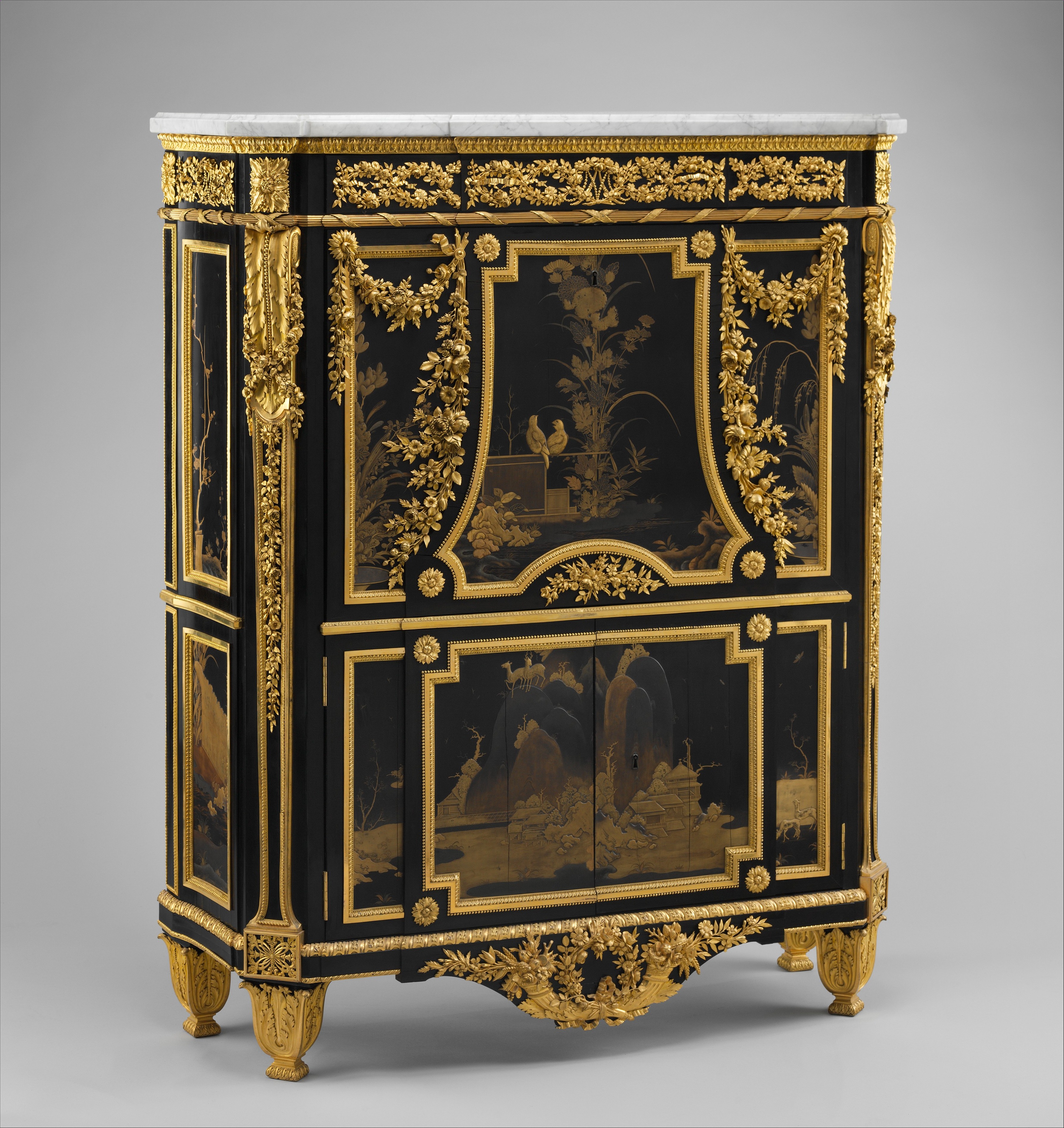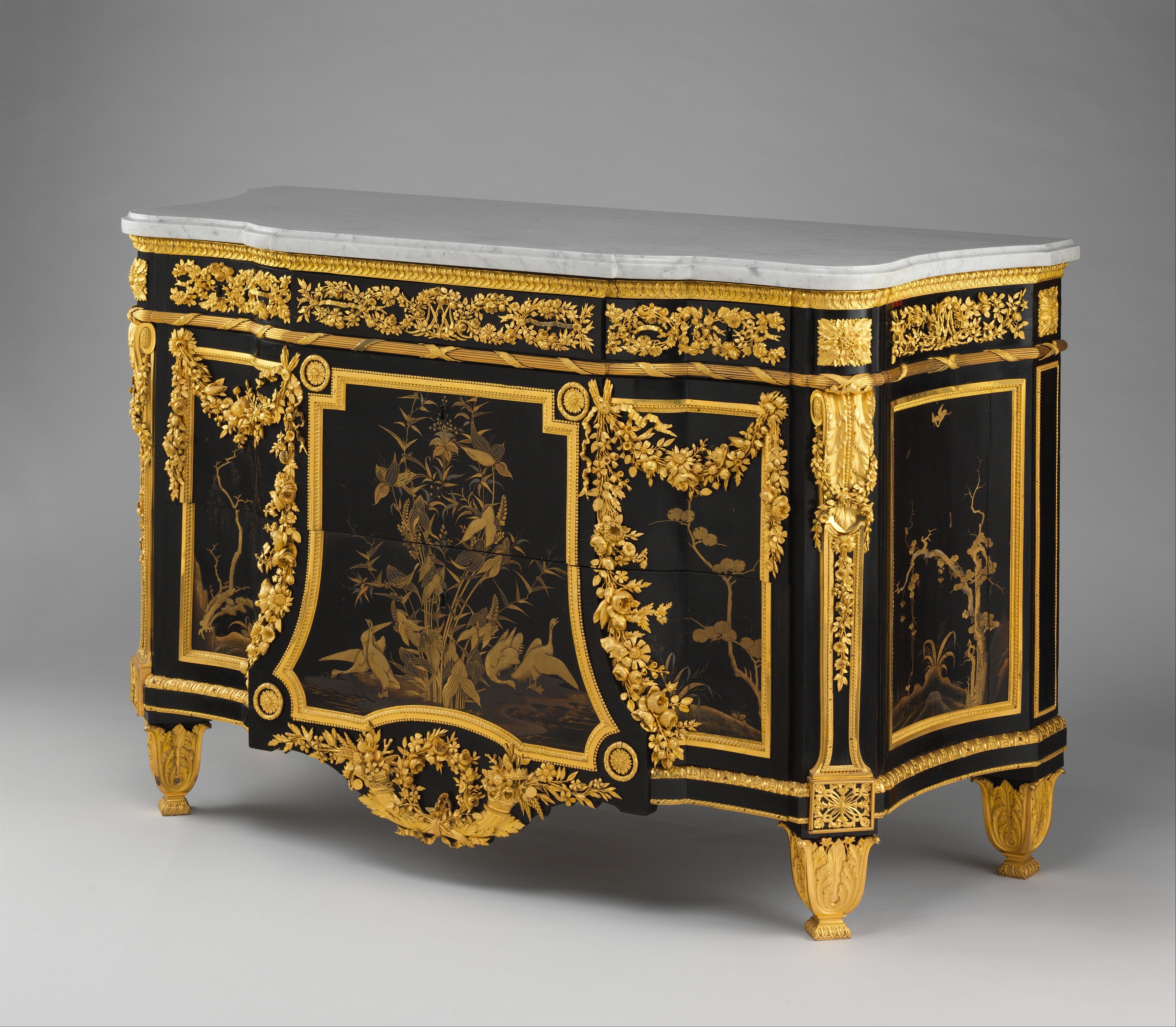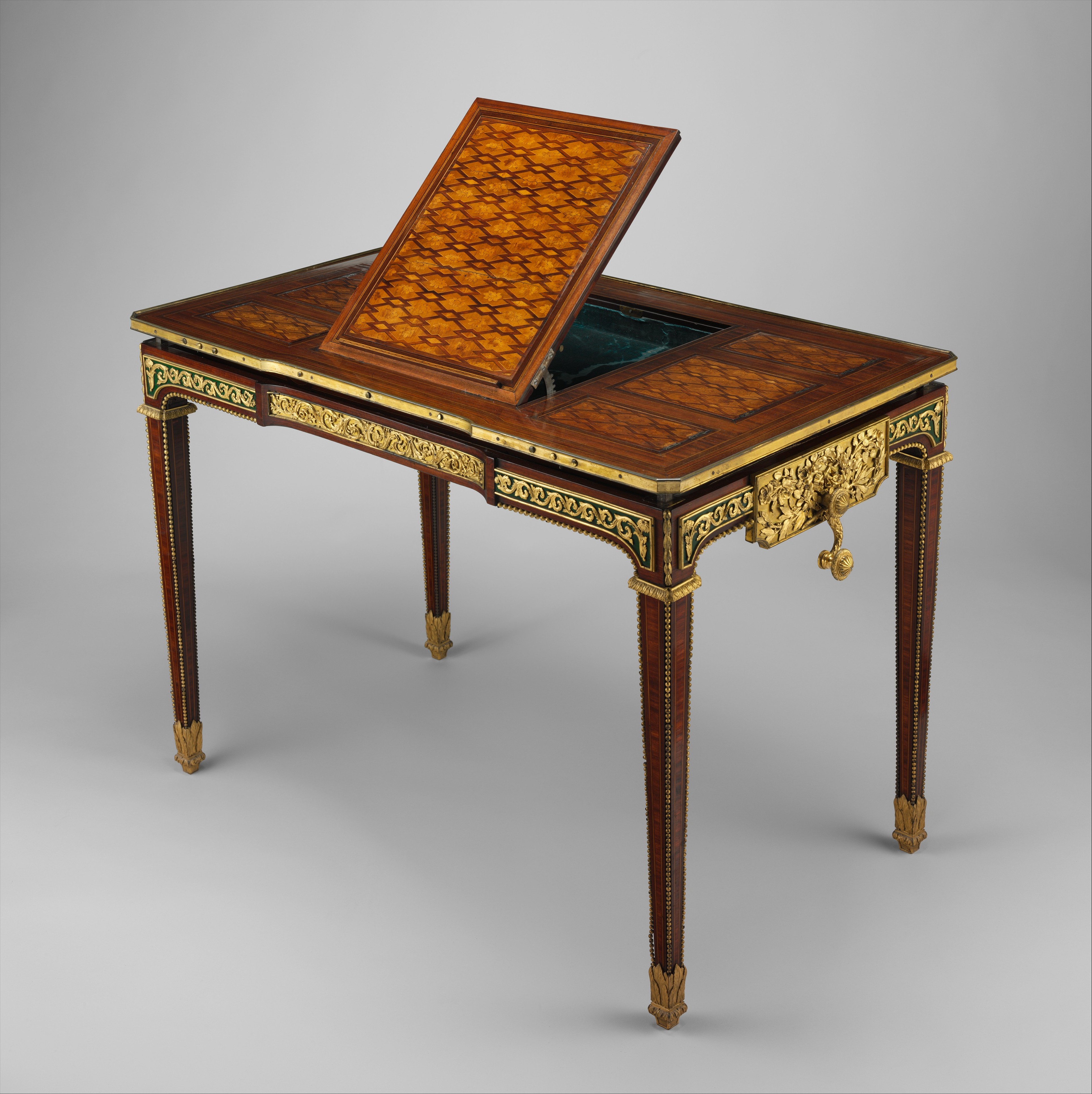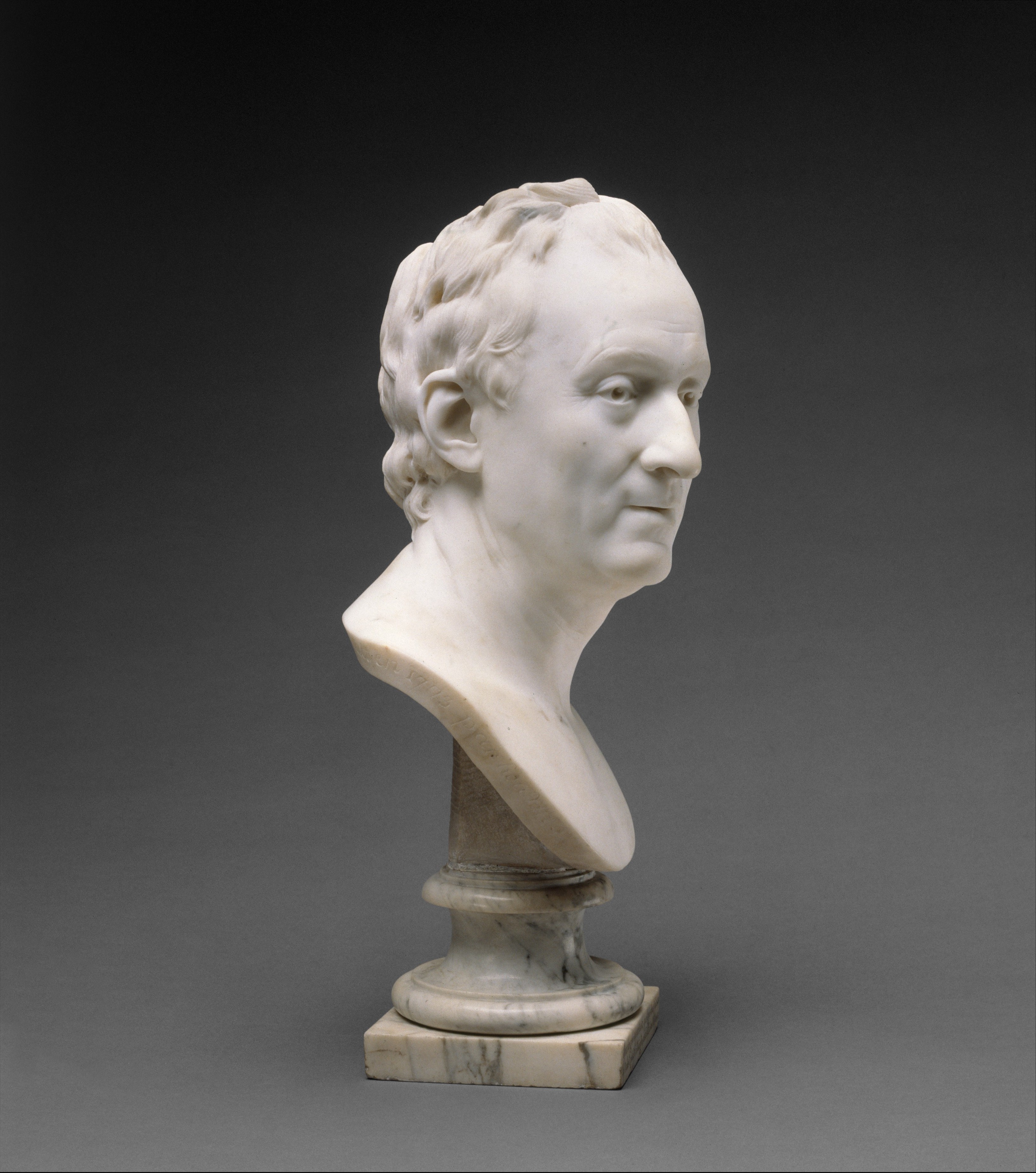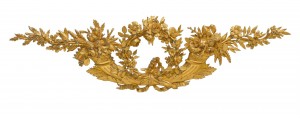A PERIOD ROOM
A period room is created from various items and objects that are deemed representative of the era it is intending to depict. Similarly, the objects selected for the room at the time were chosen not only for their aesthetics, but because they represented the ideals of their owners. The lacquer cabinets in the Tessé Room display opulence, as they are rare, valuable, and in this case, were commissioned by Marie Antoinette. They also represent a fusion of historical value and modern taste, since the lacquer included in these cabinets are a century older than the cabinets themselves.
Drop-front secretary (Secrétaire en armoire)
Maker: Jean Henri Riesener (French, Gladebeck, near Hessen 1734–1806 Paris)
Date: 1783
On view in the Tessé Room
Commode (Secrétaire à abattant)
Maker: Jean Henri Riesener (French, Gladebeck, near Hessen 1734–1806 Paris)
Date: 1783
On view in the Tessé Room
The Riesener desk is an example of a revolutionary innovation in furniture, as the user was able to raise and lower it to his liking. A crank on the side could adjust the height of the tabletop, which is connected to an extension in each leg. This speaks to the emphasis placed on individuality which is characteristic of the Enlightenment Era.
Mechanical table (Table mécanique)
Maker: Jean Henri Riesener (French, Gladebeck, near Hessen 1734–1806 Paris)
Maker: mechanism by Jean-Gotfritt Mercklein (1733–1808)
Date: 1778
On view in the Tessé Room
Diderot’s bust also exemplifies the ideals of the Enlightenment. Diderot wrote the original Encyclopédie in an effort to preserve and share knowledge beyond the bounds of social class and wealth.
Denis Diderot (1713–1784)
Artist: Jean Antoine Houdon (French, Versailles 1741–1828 Paris)
Date: 1773
On view in the Tessé Room
The Tessé Room has been constructed as a recreation of a typical noble domestic space during the eighteenth century in France. The following sections elaborate on the design of the space and who was hosted in the room.
